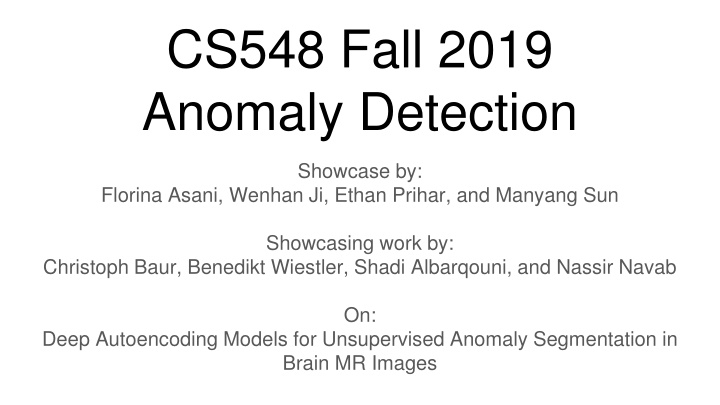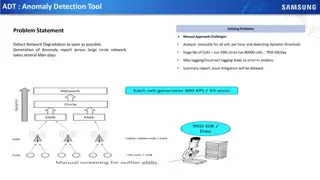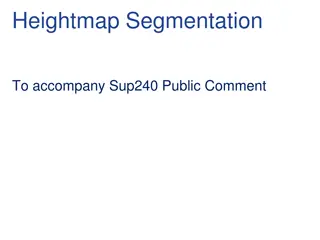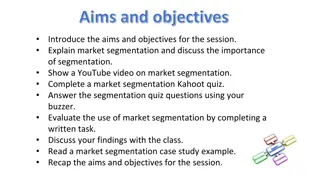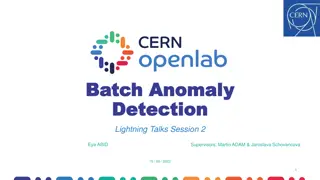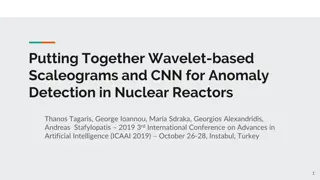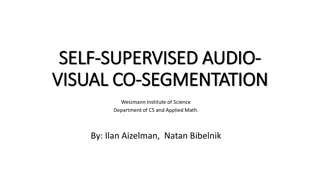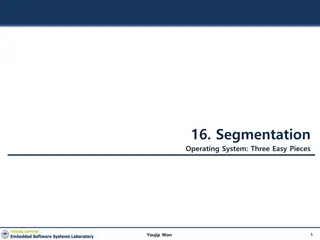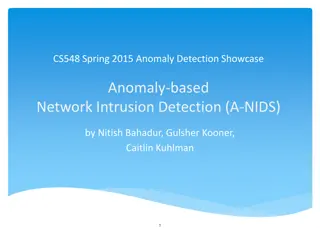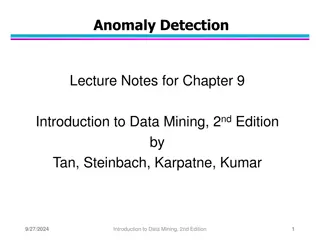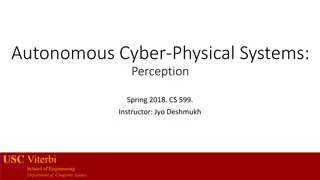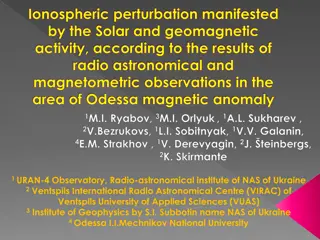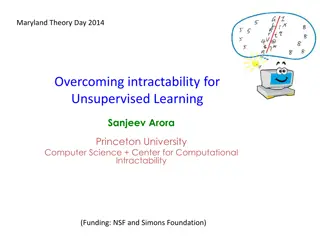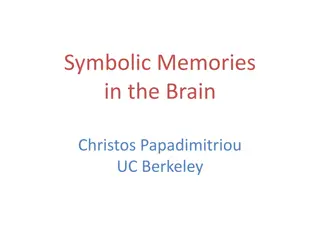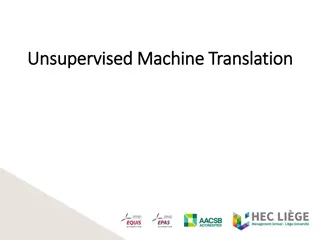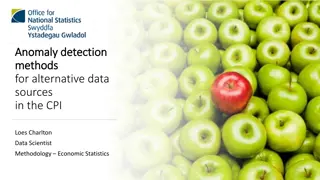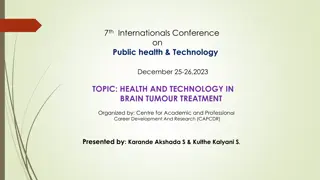Deep Autoencoding Models for Unsupervised Anomaly Segmentation in Brain MR Images
Showcase the application of deep autoencoding models for unsupervised anomaly segmentation in brain MR images, enabling accurate detection and delineation without the need for segmentation labels.
Download Presentation

Please find below an Image/Link to download the presentation.
The content on the website is provided AS IS for your information and personal use only. It may not be sold, licensed, or shared on other websites without obtaining consent from the author.If you encounter any issues during the download, it is possible that the publisher has removed the file from their server.
You are allowed to download the files provided on this website for personal or commercial use, subject to the condition that they are used lawfully. All files are the property of their respective owners.
The content on the website is provided AS IS for your information and personal use only. It may not be sold, licensed, or shared on other websites without obtaining consent from the author.
E N D
Presentation Transcript
CS548 Fall 2019 Anomaly Detection Showcase by: Florina Asani, Wenhan Ji, Ethan Prihar, and Manyang Sun Showcasing work by: Christoph Baur, Benedikt Wiestler, Shadi Albarqouni, and Nassir Navab On: Deep Autoencoding Models for Unsupervised Anomaly Segmentation in Brain MR Images
References 1. Baur, C., Wiestler, B., Albarqouni, S. and Navab, N., 2018, September. Deep autoencoding models for unsupervised anomaly segmentation in brain mr images. In International MICCAI Brainlesion Workshop (pp. 161-169). Springer, Cham. 2. http://kvfrans.com/variational-autoencoders-explained/ 3. https://kidshealth.org/en/parents/mri-brain.html 4. https://towardsdatascience.com/understanding-generative-adversarial-networks-gans- cd6e4651a29 5. Larsen, A.B.L., S nderby, S.K., Larochelle, H. and Winther, O., 2015. Autoencoding beyond pixels using a learned similarity metric. arXiv preprint arXiv:1512.09300.
Background Magnetic resonance imaging (MRI) of the head is a painless, noninvasive test that produces detailed images of the brain and brainstem. [3] https://upload.wikimedia.org/wikipedia/commons/0/03/T1t2PD.jpg
Background How to identify and segment the pathologies in brain MR data? By hand is not ideal Supervised deep learning methods suffer from limited generalization and lack of labeled data Alternative approach: Unsupervised deep learning method
Problem Description Brain lesion detection and delineation as an unsupervised anomaly detection (UAD) task based on state-of-the-art deep representation learning, requiring only a set of normal data and no segmentation- labels at all.
Data Acquisition FLAIR images acquired with a Philips Achieva 3T scanner. a commonly used magnetic resonance sequence remove signal of the cerebrospinal fluid from the resulting images 83 subjects with healthy brains (training) 49 subjects with multiple sclerosis lesions (testing) Signs of Stroke https://www.indiamart.com/proddetail/philips-achieva-3t-mri-8672227248.html https://upload.wikimedia.org/wikipedia/commons/0/03/T1t2PD.jpg
Data PreProcessing 1. co-registered to the SRI24 ATLAS to reduce appearance variability 2. skull-stripped with ROBEX to extract whole brain 3. denoised using Curvature Flow 4. normalized into the range [0,1] 5. focused on 20 consecutive axial slices (256 256px) around the midline in order to narrow the view
Methodology: Overview 1. Learn to reconstruct healthy brains from a compressed representation 2. Attempt to reconstruct new brains 3. If reconstruction is bad, new brain is likely unhealthy As Seen In [1]
Methodology: Variational Autoencoders (VAE) Regular autoencoders create a vector of features Variational autoencoders create feature means and distributions, which are sampled to construct the vector of features. Variational autoencoders create more informative features As seen in [2]
Methodology: Generative Adversarial Networks (GAN) As Seen in [4]
Methodology: VAE-GAN As Seen In [5] As Seen In [5]
Experiments dAE- sVAE-GAN Residuals Naive Residuals Brain MRI 1st column - a selected axial slice and its ground-truth segmentation (brain lesions) 2nd column - the filtered difference images (top row) and the resulting segmentation augmented to the input image (bottom row) for the dAE model 3rd column - the filtered difference images (top row) and the resulting segmentation augmented to the input image (bottom row) for the sVAE-GAN model As Seen In [1] True Positives False Positives
Experimentation Results Frequency Distribution of Non- Lesion Residuals Frequency Distribution of Brain Lesion Residuals # of Pixels Abnormal brain regions have higher residuals on average, and are clearly distinguishable from normal regions As Seen In [1] Residual Value
Experimentation Results Table 1. Results of our experiments on unsupervised MS lesion segmentation. We report the Dice-Score (mean and std. deviation across patients) as well as the avg. reconstruction time per sample in seconds. Prefixes d or s stand for dense or spatial. DICE- a measure of how similar the objects are. It is the size of the overlap of the two segmentations divided by the total size of the two objects z- lower dimensionality representation of the input images AUPRC - Area under Precision-Recall Curve Avg. Reco. time - average reconstruction time per sample in seconds
Conclusions AE & VAE with dense bottlenecks cannot reconstruct anomalies and brain convolutions Introducing adversarial training only had marginal improvements - not required in this setting VAE-GAN approach opens up opportunities not only for unsupervised brain lesion segmentation but can also act as prior information for supervised deep learning
